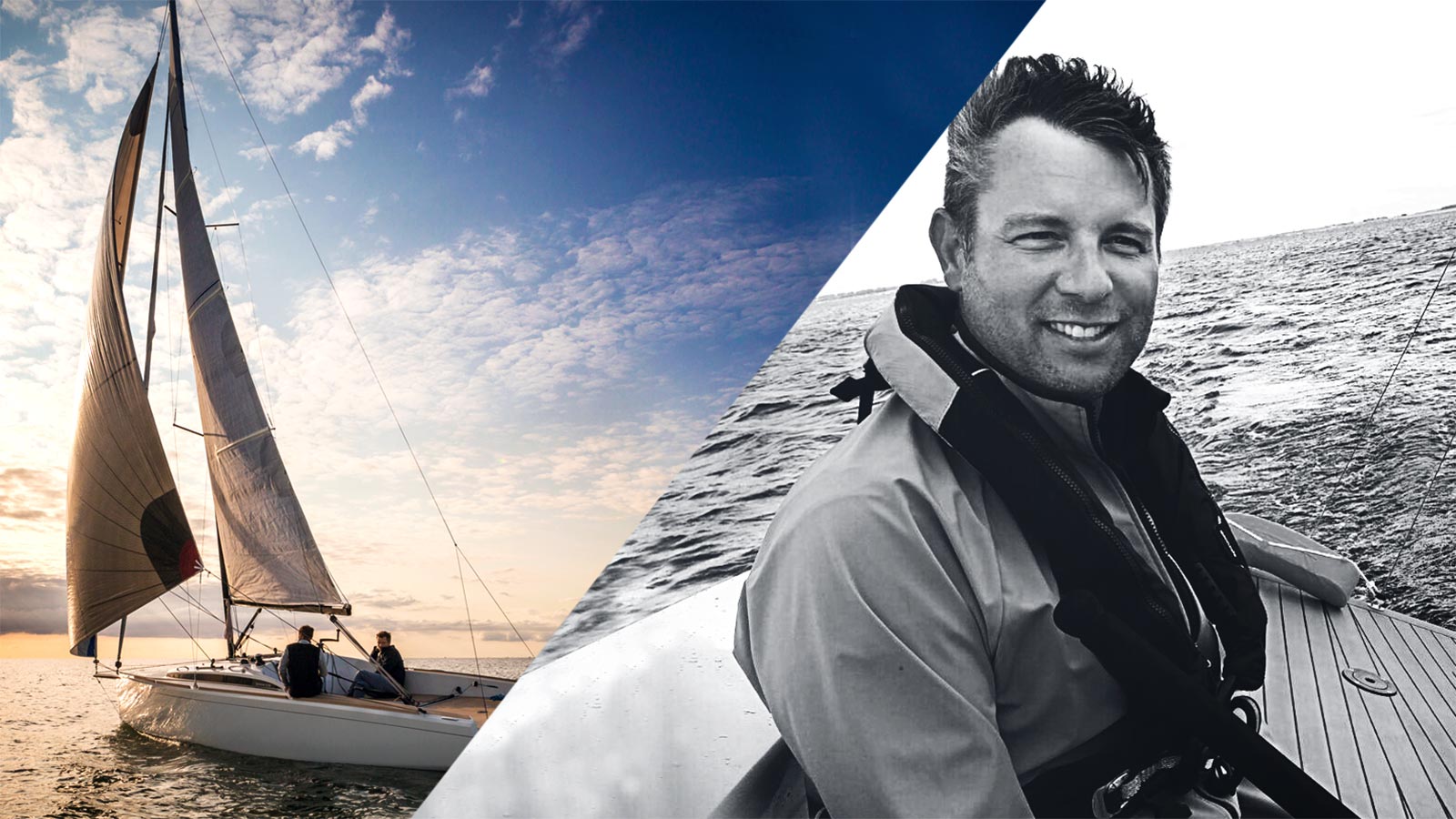


Torqeedo’s boat builder partners bring electric mobility to life through their innovative designs. Here, Michael Goddaert, whose start-up brand Domani reinvented the day sailboat, shares his vision for the future of boating.
Michael, things are looking good for you guys. Just after your launch, your Domani S30 was nominated for the prestigious European Yacht of the Year 2019 award.
Absolutely. We sold our first sailboat three months after we founded the company. Two years into production, we sold 12 boats. It usually takes around two years for a new brand to present its first product. We are a bit awestruck ourselves.
Why do you think Domani took off so fast?
It’s hard to say. We try to look at what’s going on in society and look outside the sailing bubble. A boat needs to perform well and sail fast, which is fun for sailors, but there are always people on board who are not enthusiasts, and they have to enjoy their time as well. They have different needs: easy access to the water, a sundeck, space and comfort. We wanted to find the perfect balance between design, performance, and enjoying the yachting lifestyle. I’ve been looking for the yacht of my dreams all my life, but it didn’t exist. So, we decided to build it.
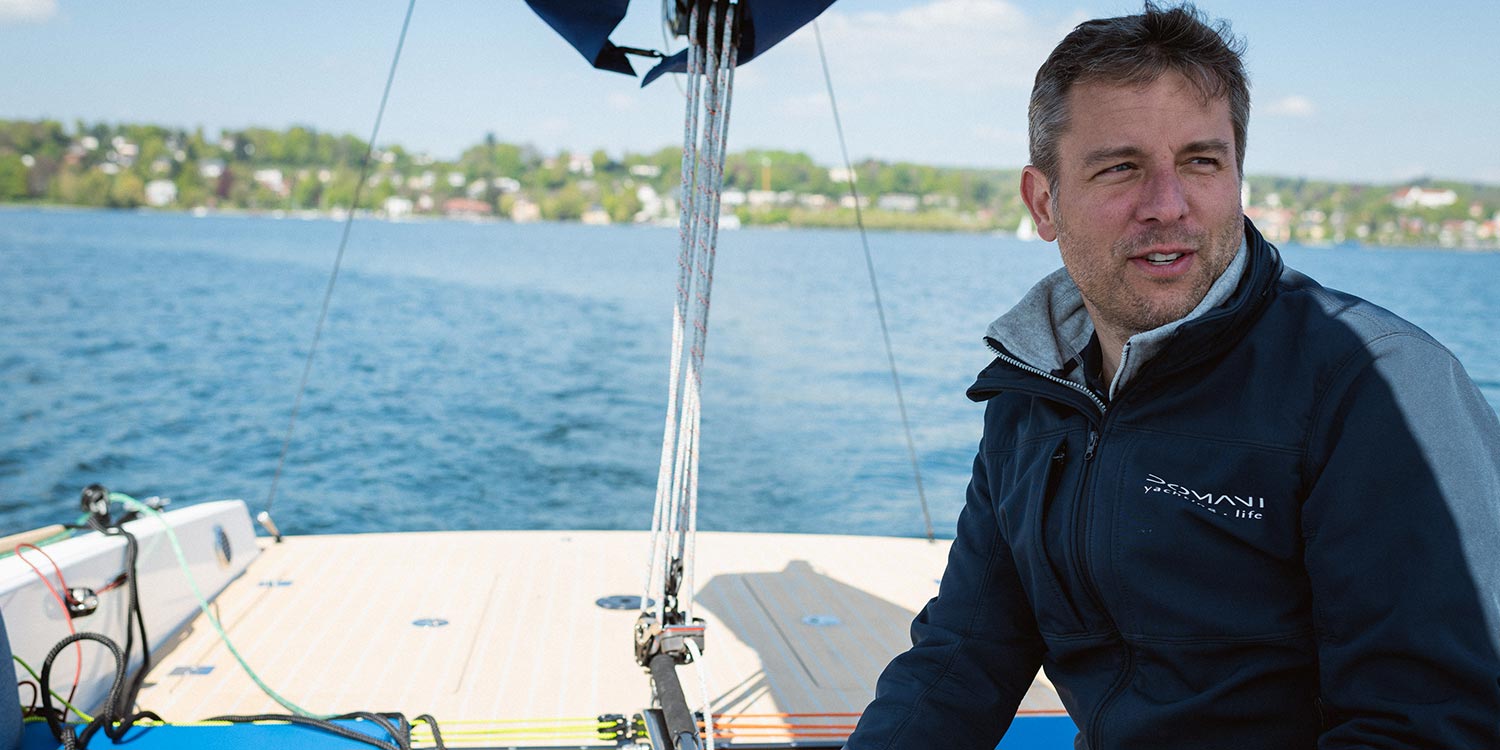
“The yacht of my dreams didn’t exist,” says Michael Goddaert, an airline pilot and avid sailor from Belgium. “So we built it.”
The S30 is only available with electric propulsion. Why?
I always wanted to do that. Electric propulsion is efficient, quiet, and you don’t have all the exhaust gases, smell and vibrations. But besides that, there’s a real hype around it right now. It’s the right time to go 100% electric.
“Electric propulsion is efficient, quiet, and you don’t have all the exhaust gases, smell and vibrations. It’s the right time to go 100% electric.”
What feedback have you had from your customers?
In general, people are very much into following innovation and ecology trends. There’s a lot of interest in electric propulsion and composites and the way we build the boats. I thought we’d get more critical questions about electric. Some people wonder about charging issues. Marinas in Germany, Austria, Switzerland, Belgium and the Netherlands are well-equipped, but in the Mediterranean boats are often on moorings instead of in a harbour. But, solar charging during the week seems to be working fine for our customers that don’t have access to shore power. They’re entering the weekend, prime boating time, with a fully charged lithium battery. The S30 sails very well in light winds, another feature which makes it well-suited for electric propulsion.
The Domani S30 in action during the Electric Days event on Lake Starnberg.
What are the design implications of electric propulsion?
We have a lot more freedom. The old design dogma was ‘Form follows function’. The traditional sailboat is built around the diesel engine, the weight of the materials, the tanks, and the transaxle that transmits power from the motor to the propeller. With an electric drive, the designer is liberated: The engine is much smaller and lighter, and we can place the batteries wherever we want. So we have more free space. Also, our naval architect is very happy with the weight distribution.
What do you do with all the newly available space?
The diesel engine always had to be in the middle of the boat because it is so heavy. We’ve created socialising space for up to five people and added many features of larger yachts, such as a sun deck and an airy interior, by moving the electric drivetrain under the waterline. We also have more space for diving gear, a Seabob, and other toys people like to have fun with.
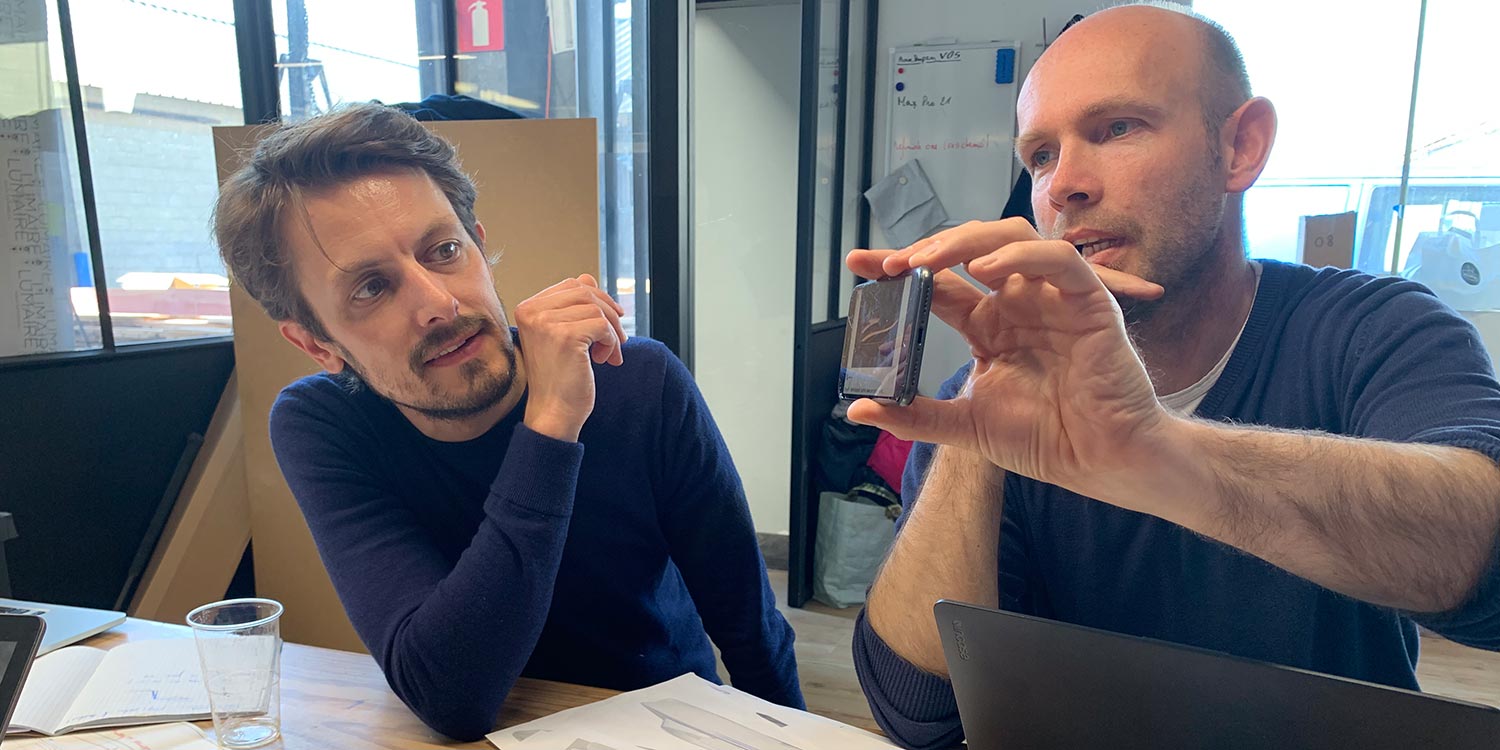
The Domani design team: Production manager Jaap de Jonge (right) and designer Jonathan Anthierens.
How is your collaboration with Torqeedo engineers?
We have the same mindset – fully electric and zero emissions. The installation of the Torqeedo Cruise Pod systems in our boatyard is so easy – plug & play really. And we designed and built the S30 from scratch with the e- drive in mind. That makes life easy for us. A sailboat is all about balance and weight.
How does your design process work?
In the past, you called a naval architect and said: “I need an 8-metre sailboat,” and that’s what he delivered. But I believe that design comes from the tension and dialogue between people. We work with the Dutch naval architect Peter Bosgraaf and our Belgian designer is Jonathan Anthierens, who does a lot of automotive design. We work remotely, send sketches, and have Skype conferences. But every few weeks we have design meetings.
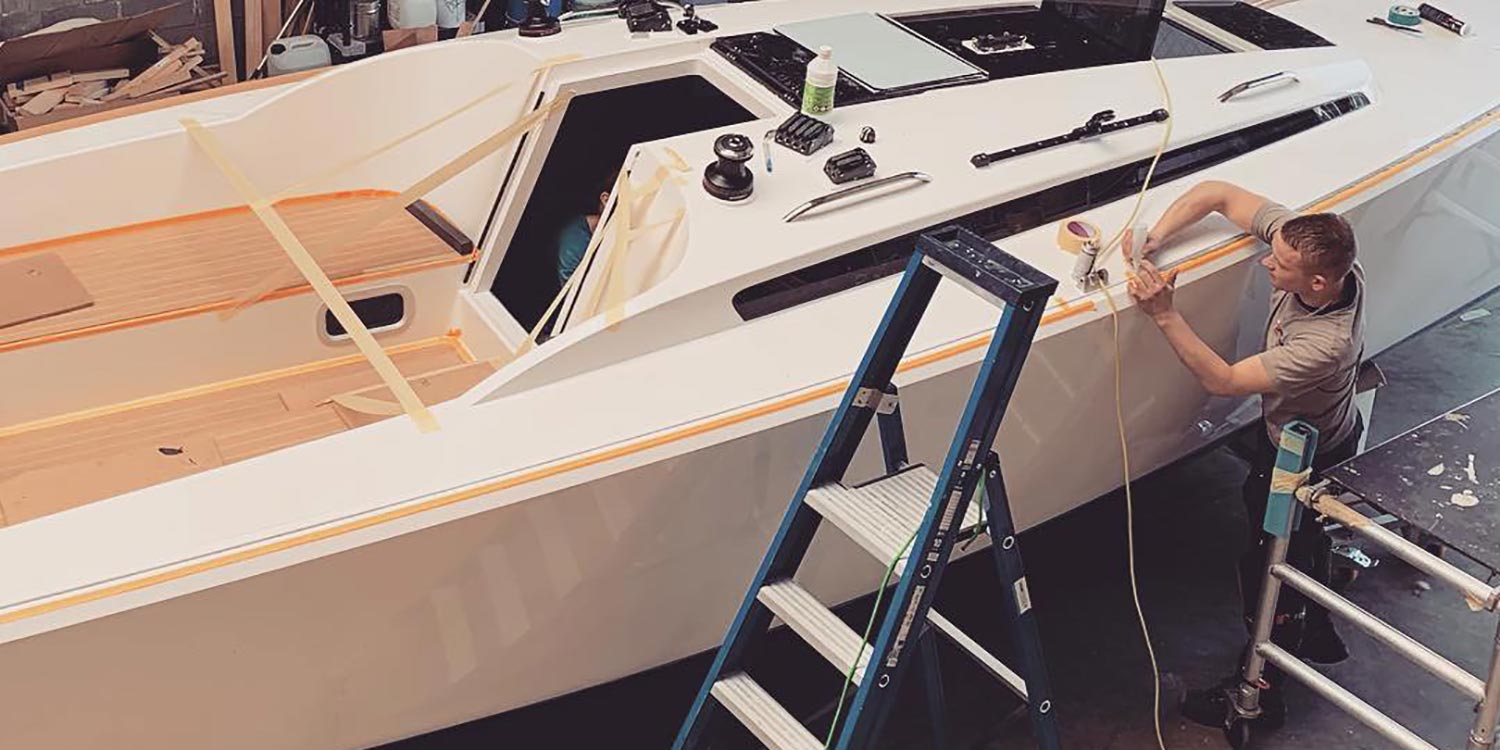
Efficient production: The Domani team only needs twelve weeks to build a new S30.
Which designers and architects have influenced your work?
I love Le Corbusier and Santiago Calatrava, who planned buildings from the inside out and centred on the user. They created something entirely new, yet recognisable. That’s what we’ve tried to do as well: We wanted to sit five people in the centre of the boat and have a real sundeck, so we designed the boat around that – we ended up with a yacht that is distinct, unique, yet recognisably part of the sailing style heritage. Luca Bassani and his Wally range of superyachts have been a big influence on the boating industry – the minimalist decks with all the winches gone. He really started this trend. He had customers who dared to do something different. And the timing was right. That’s how things change. I think it’s quite similar with electric propulsion. You have amazing people like those at Torqeedo and external factors like the diesel scandal and global warming. That changes everything.
In what other ways are you building the S30 sustainably?
A sailboat has a long lifecycle of 40-50 years, not 5-10 like a car. That, in itself, is a positive. We don’t use hardwoods. Teak is a great material in saltwater but it takes hundreds of years to grow a beautiful tree. That’s not sustainable. Most boatbuilders are still using 6 mm teak, but we are using Permateak, a fully recycled material that looks and feels just like wood. We also see a lot of innovation with building materials, natural fibres and low-styrene resins replacing fibreglass. These are exciting times!
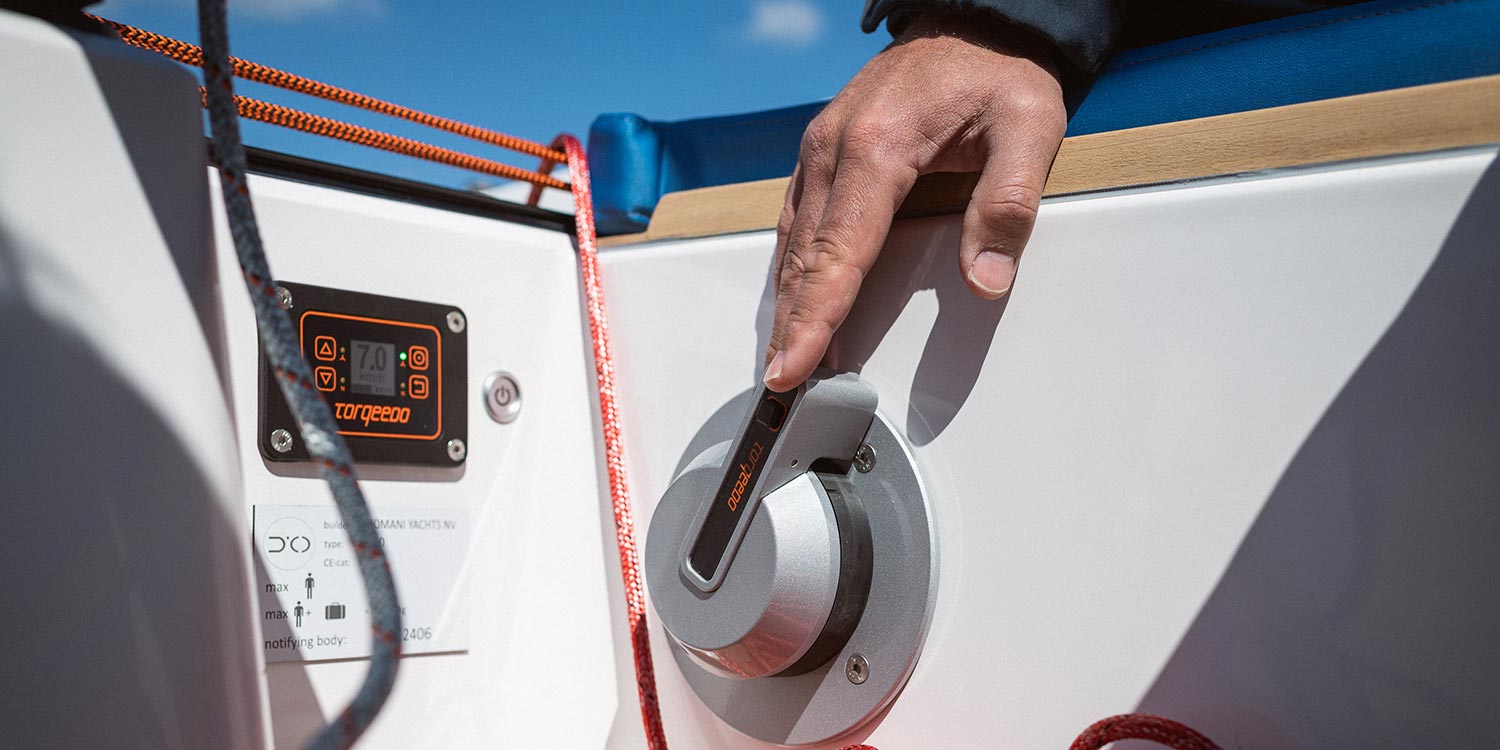
Integrated design: The Torqeedo Cruise 2.0 pod drive can be controlled with the fingertips.
The S30 has a custom feel to it - how do you collaborate with customers?
We sell most boats directly to end-users. People want to be involved. They want to visit the Domani shipyard and have their ideas and dreams realised in superyacht style and service. For this, we use digital tools. For every boat, we have a WhatsApp group so we can send the owner progress photos and hold videoconferences with both suppliers and customers. We also use the group as a customer service tool so they can get in touch if they have any questions. It’s an intense relationship, but we also get sent photos of a boat’s christening or the speedometer at full speed!
What’s your vision for the future of boating?
People are looking more for the experience instead of full ownership. Sharing and co-ownership are big trends. Before long, if I want to sail for a weekend, I’ll go to an airbnb-like site and find a perfect fit. For the rest of the year, I’ll be doing other things, like skiing or city trips. In the future, we’ll have fewer boats in harbours, but more usage. That’s also more efficient and eco-friendly!
More information:
Find high-resolution pictures at the: › Torqeedo Dropbox
Find the main catalogue 2020 here: › Catalogue 2020
Biography
Michael Goddaert has been an avid sailor all his life, but “always had a greater interest in the technical aspects than the sailing part”. When he was 20 years old, he trained to be a civilian pilot. He still flies 50% of his working life in a Eurowings Airbus. Prior to founding Domani, he built the Zeydon Z60 sailing yacht, which was designed in cooperation with BMW’s Designworks studio in Munich.
Relevant Torqeedo Products
“Electric propulsion changes everything”
- Personnes
- Voiliers
- Technologie
- Vision

